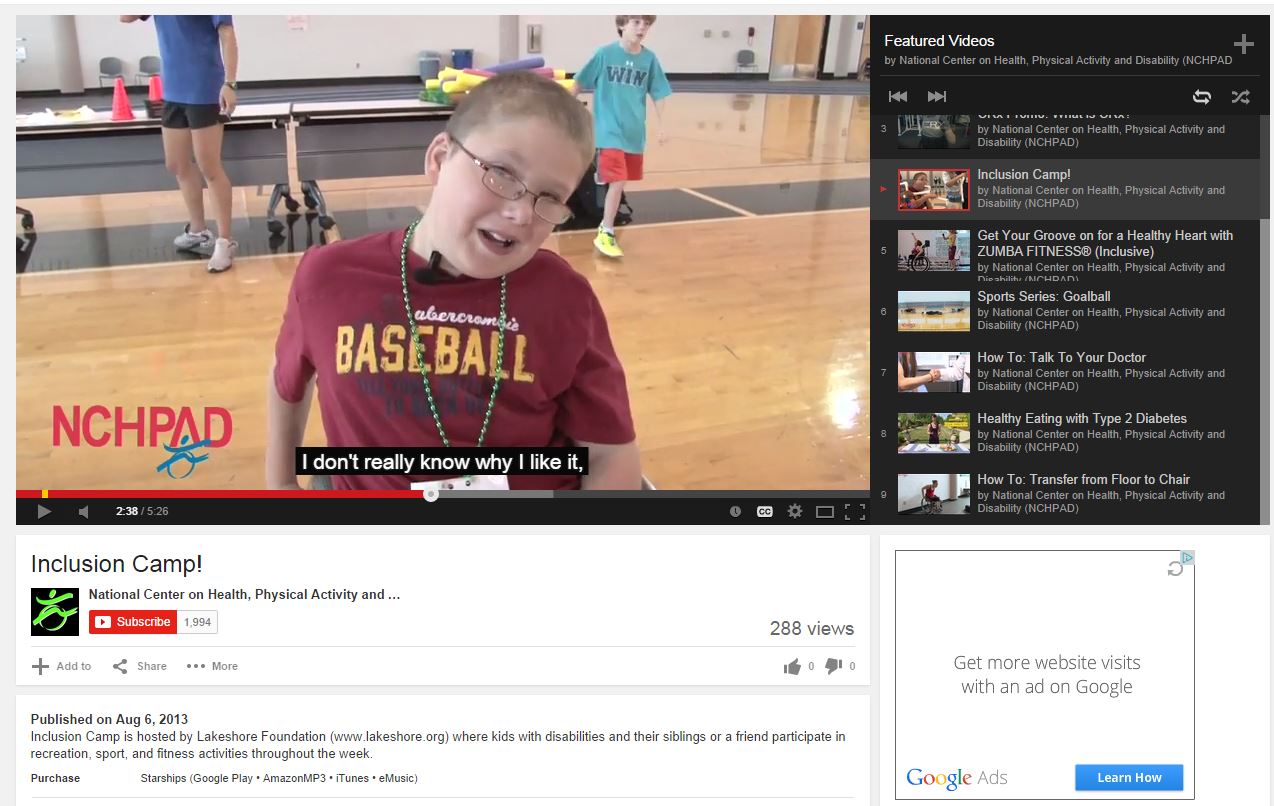
Video communications occur in many on- and offline formats. These include YouTube and other video hosting and sharing websites, television broadcasts and advertisements, and video and DVD recordings. These communication types may be particularly exclusive towards individuals who are blind or have visual impairments, as well as for the Deaf and other individuals with hearing impairments. The following guidelines will help organizations create video messages that are more accessible for and inclusive of individuals with disabilities.
| Inclusion Guidelines |
- Ensure that individuals with disabilities are visibly represented in videos both as main and background participants.
- Ensure that some videos target individuals with disabilities and the disability community. This is particularly relevant for videos posted to YouTube and other video hosting and sharing websites, as more content can be uploaded due to the immediacy of the process, allowing for more published content than videos on DVD, VHS, etc.
- Ensure that video covers, thumbnails for videos posted online, and other pictures associated with the videos visibly represent individuals with disabilities.
|
| Accessibility Guidelines |
- For all videos, create closed caption content that expresses all spoken verbal contents of a video. Additionally, create closed captions that clearly describe all non-verbal audio. Leave these captions on screen long enough that they may be read at a normal pace. These measures will ensure that Deaf individuals and others with hearing impairments are able to fully comprehend the audio content and the video as a whole.
- For all videos, create audio-narrated “video descriptions” that effectively describe the non-vocal action that is occurring in those videos. Ensure that these descriptions and all other spoken dialogue are delivered clearly enough to create a full, descriptive mental picture of the action for individuals who are blind or have other visual impairments.
- Ensure that videos are clear and do not contain flashy lighting or jerky camera work that may be difficult to comprehend for individuals with visual or cognitive impairments.
- Have information readily available in different, non-video formats (e.g.: Braille or large print handouts, data or audio CD-ROMs, etc.) or audio recordings.
|

